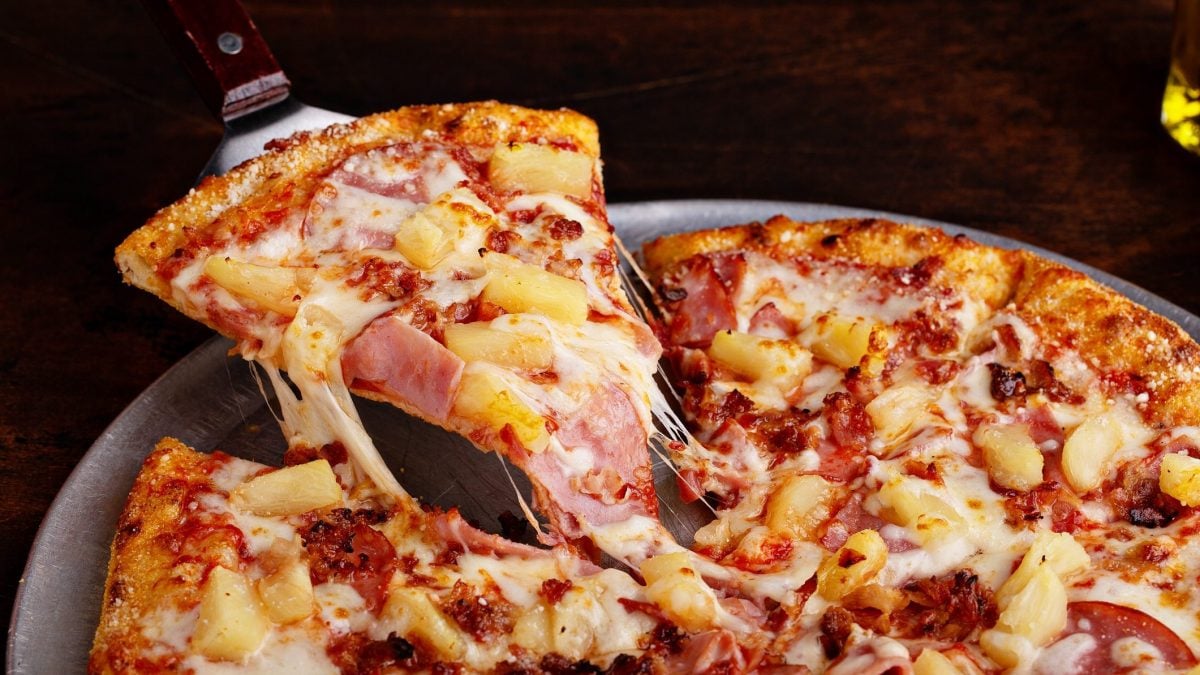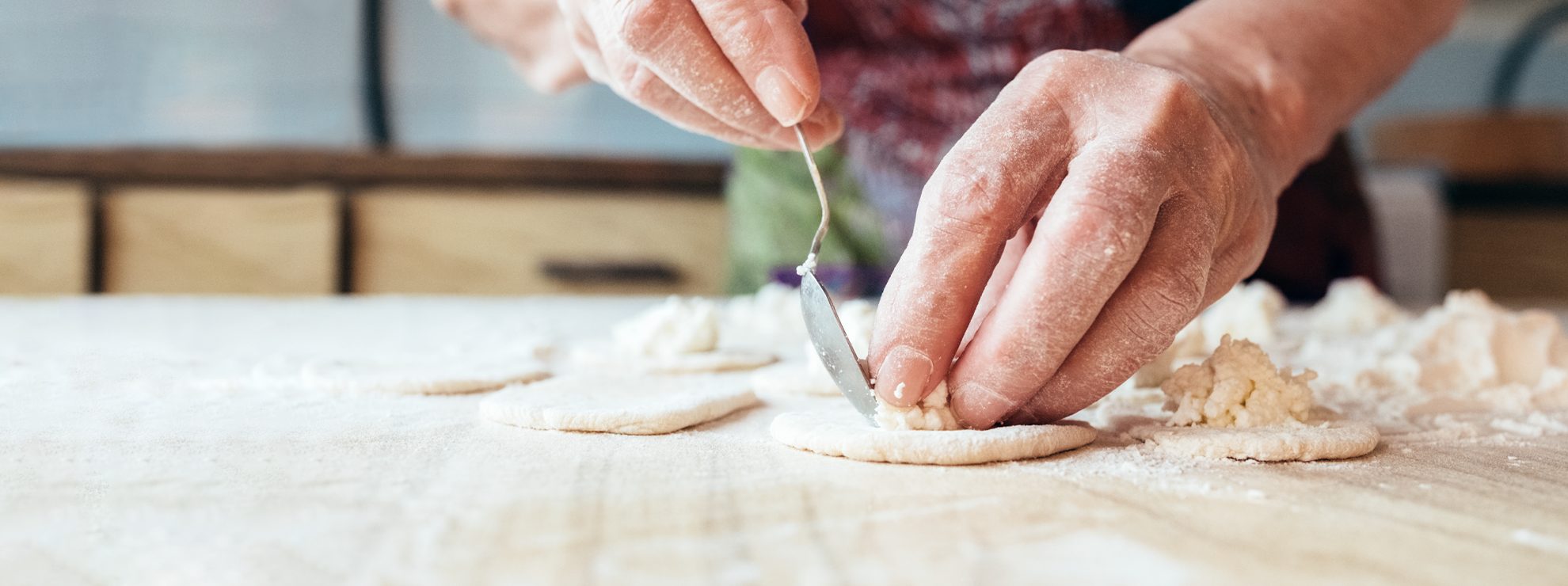
If you were to ask a random Italian what the greatest gastronomic aberration ever created is, it would be very likely that he would answer: pineapple pizza, the very famous Hawaiian pizza prepared with a base of cheese and tomato, topped with pieces of ham and pineapple in syrup. There are versions that include bacon, mushrooms, peppers, salami and so on, but always with pineapple as the protagonist.
Before delving into the history of this dish and the "whys" that drove the creator to create this pizza, let's start by debunking a myth: Hawaiian pizza, despite its name, is not originally from the Hawaiian Islands and it is not even American. Hawaiian pizza was born in Canada, by a Greek immigrant, and if you are among those who think that "only Americans can eat such crap" you are very wrong: according to a YouGov survey last February, only 26% of Americans like the "controversial pineapple pizza". But if they don't like it either, how did it become so famous? Here is the history of Hawaiian pizza and let's try to discover the origins of the hatred that the whole world feels for this dish, while continuing to eat it.
The History of Pineapple Pizza
The history of Hawaiian pizza began about ten years ago: only in 2010 did a Canadian, originally from Greece, claim paternity of the first pineapple pizza in history, at The Satellite restaurant in Chatham-Kent, Ontario in 1962.
The pizza chef, Sam Panopoulos, is a first-generation immigrant, who arrived in Canada in 1954, at the age of 20. However, his first contact with pizza was in the homeland of this dish: Panopoulos arrived in the New World by sea, like the first Italian-Americans, and from Greece he stopped in Naples. In the capital of Campania he tasted pizza and was struck by it.

When he arrived in Canada he tried to replicate the product, without success, so he started to prepare a sort of Chinese cuisine adapted to the Canadian public. However, he still had a passion for pizza, the problem is that in Canada this dish was practically unknown. He found a pizzeria in Windsor, a very small city in Ontario, but to find a product more faithful to the Italian one, he had to go all the way to Detroit, in the United States. Detroit pizza is similar to the Chicago style, so tall and very topped, with a base more similar to shortcrust pastry than pizza.
After ten years of research, the good Panopoulos is satisfied with this memory and decides to revolutionize his restaurant and propose his own pizza. However, he decides to experiment and try different ingredients and combinations. After 10 years of Chinese cuisine, he would like to continue on the path of the fusion between sweet and sour, also because he loves sweet and sour pork.
In the 1960s, in Canada, there was a trend for tiki culture, which became famous in the world of bartending. The main ingredient of that "movement" was precisely canned pineapple, a symbol of that culture, the only ingredient capable of combining the exotic with the practical. The custom, not by chance, spread after the Second World War, thanks to the return of soldiers stationed on the Pacific islands. Panopoulos found himself in the midst of this explosion of flavors, of new ingredients, and decided to combine them: he found himself with a can of pineapple and some ham in his hands, and decided to put them together on a simple tomato pizza. Thus, in 1962, the first Hawaiian pizza was born. The name, as you have seen, has nothing to do with the wonderful islands: however, Hawaii is the world's leading exporter of pineapple, on each can there is a geographical indication and therefore for Sam Panopoulos the choice of the name was simple and natural.

Over the course of the last decade, the inventor of pineapple pizza has given numerous interviews and it is surprising to discover one thing: the Hawaiian pizza becomes the subject of debate from the first draft. You would have imagined an immediate success that would have pushed Panopoulos to continue on this path, but no. Here a strange vicious circle is created: everyone criticizes it, but everyone goes to try it, bringing huge profits to The Satellite, making this restaurant a true icon of Ontario. Over time, the same detractors begin to appreciate the product making it become a true "symbol of Canada" as Prime Minister Justin Trudeau said.
Other "Things" With Pineapple
Sam Panopoulos passed away in 2017 but in his 7 years of worldwide fame he expressed his regret several times: not having patented the dish. In reality at that time it was impossible to patent names or recipes, even today it is a blind spot of normal jurisprudence, but it probably went better this way for the Greek. Panopoulos is the first real inventor of the "Hawaiian Pizza" with this name, but he is not the first to have put pineapple on pizza. The record belongs to a Portland restaurant that in 1957 brought a pizza with papaya, peppers and pineapple to the menu. This should not surprise us: Portland is one of the largest commercial centers in the Northeast of the United States, therefore on the Pacific coast, very close to the border with Canada, an area strongly influenced by tiki's culture.
One could go even further: as Garage Pizza reports, in 1955 the famous Clemens Wilmenrod, the first TV chef in Germany, brought the "Toast Hawaii" with ham, cheese and pineapple to TV. The snack became so famous in the country that the Hawaiian pizza was considered only an evolution of Wilmenrod's invention.
Diplomatic Incident Between Iceland and Canada, Americans' Fears
The 2 Michelin Star chef, Ana Roš, thinks that cooking is "the best expression of diplomacy in the world". The Slovenian chef says this with peace in mind, but diplomacy can be used to reconcile as well as to destroy. This is precisely the case of the Hawaiian pizza and the incident that created misunderstandings between Canada and Iceland.
In 2017, Icelandic President Guðni Th. Jóhannesson admitted in an interview that he "supports Manchester United" and that he would ban pineapple on pizza because he hates it. The outcry in Anglo-Saxon countries was such that the expression "A Statement on the Pizza Controversy" or "Pizza-gate" was coined, forcing him to clarify his position: "I don't have the power to make laws that prohibit people from putting pineapple on pizza. Presidents shouldn't have unlimited powers. I wouldn't want to hold this position if I could pass laws that prohibit things I don't like. I wouldn't want to live in a country like that. For pizzas, I recommend fish products."
It must be said that Jóhannesson has approached his entire political career in an informal manner: he was the first president in the world to march in a national gay pride and to finance the event with his own salary, he has done numerous social works and his approval rating has reached 97% in his homeland, an unimaginable figure for any democratic country. In North America, however, those playful statements were not taken well at all and even a president as informal as Justin Trudeau felt obliged to underline his national pride by defending "this delightful invention of Ontario, a pride for all of Canada".

There is also another very important diplomatic case and it involves the United States of America. We quote verbatim from a Mashable headline: "Exasperated Officials Use Pineapple Pizza to Explain Russian Election Meddling". This story concerns the elections that brought Joe Biden to the White House: the American federal agency for cybersecurity, CISA, to explain to citizens the dangers of the internet during the elections, especially from Russia, used Hawaiian pizza.
The intention is to make it clear that there are people who can influence the political debate and create false information. An example? Convincing people that pineapple pizza is delicious. The infographic even has a disclaimer to protect against functional illiterates who don't understand the metaphor: "To date, we have no evidence that Russia (or any other nation) is actively conducting operations against pizza toppings. This infographic is an ILLUSTRATION of how information operations have been carried out in the past to exploit divisions in the United States."
This infographic, in its own brilliant way, also hides a deeper message: 2019 is the year in which QAnon began to gain more followers, a horde that led to the assault on Congress on January 2020. One of the founding conspiracy theories of the movement is called "Pizzagate", a theory that went viral in 2016 (at the time it saw Hillary Clinton as the protagonist) and is based on the exchange of some emails between American politicians and restaurants with an alleged human trafficking and hundreds of cases of child abuse at the center. The theory came back into vogue in 2019, shifting the focus from the Clintons to "an alleged global elite of pedophiles and child traffickers". CISA, well aware of what was happening, wanted to use pizza to reach them too (without success).
;Resize,width=767;)
